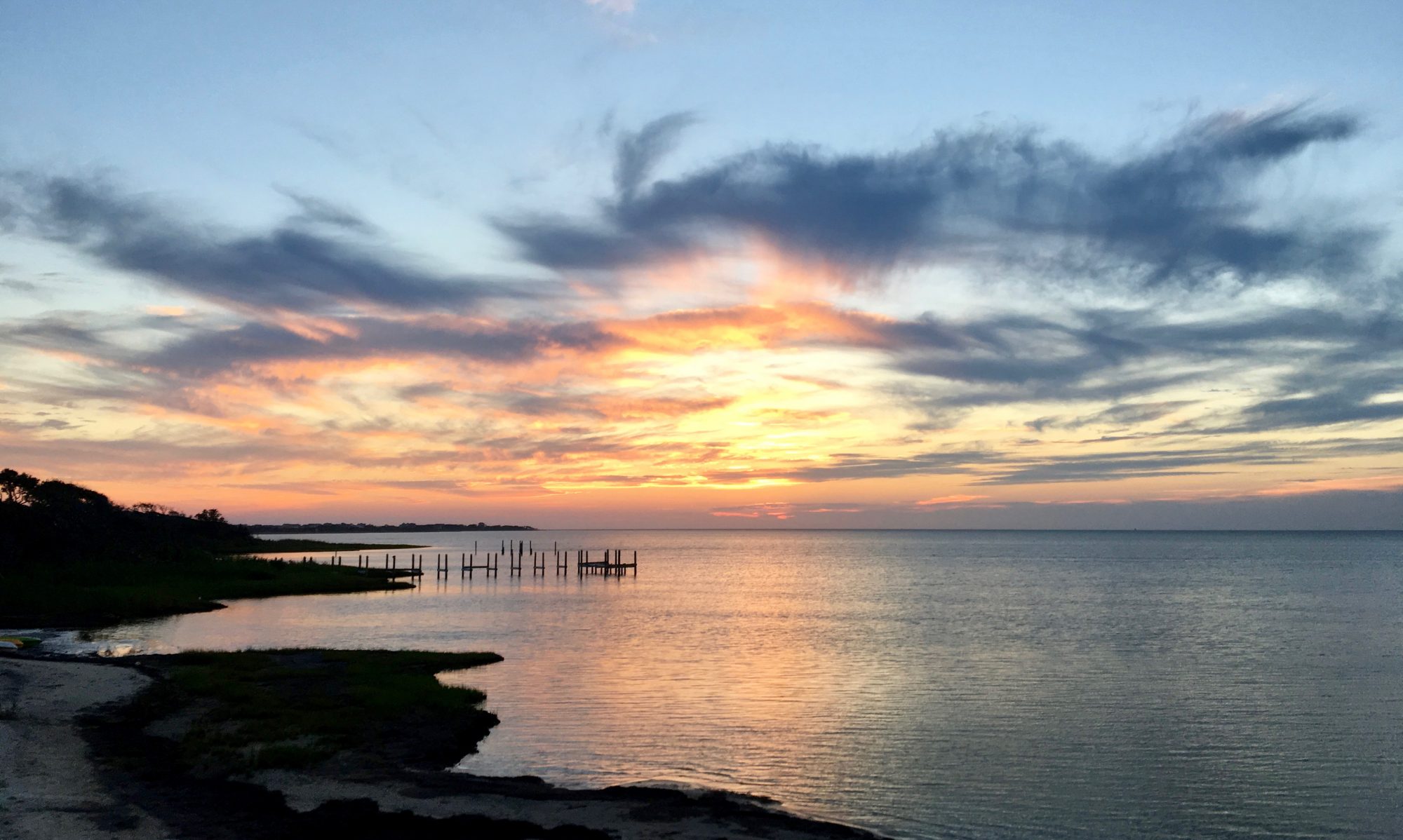By Lisa Graichen, Climate Adaptation Program Coordinator, University of New Hampshire Cooperative Extension and New Hampshire Sea Grant
Editors’ Note: This story is the fourth contribution to the TCS Storm Stories series.
The 2017 hurricane season was the most expensive in US history, with an estimated $265 billion in damages from 17 named storms, easily surpassing the previous record (2005) of $159 billion, which saw 28 named storms including Hurricane Katrina. Adding the West’s wildfires brings the 2017 damages total from large-scale hazard events to over $300 billion [1].
While recovery efforts from last year’s extreme events are still underway, we also need to think ahead toward preparing for the 2018 hurricane season while we have the chance. Between climate change and ever-growing coastal populations, we can’t afford not to learn from these recent extreme events. This past hurricane season offers lessons in the importance of using social media, integrating social science, and addressing equity issues in our preparedness work.

How is climate change affecting extreme weather?
While there are many factors that contribute to extreme weather, the following points are clear:
- Warmer oceans provide more energy for storms, so we expect more intense storm events.
- There is more uncertainty about the effect of climate change on hurricane frequency. The overall number of hurricanes may drop, but the proportion of stronger hurricanes may increase.
- Regardless of changes in hurricane strength and frequency, storm surges will be higher due to higher sea levels.
- Warmer air holds more moisture, leading to more intense rainfall. “Hurricane rainfall is projected to rise 7% for each degree Celsius rise in tropical sea surface temperatures” [2].
- Higher ocean temperatures may also contribute to larger and longer lasting storms.
- The range of hurricanes may expand as ocean temperatures rise, leading to storms in places that haven’t experienced them before (e.g., Ophelia, which hit Ireland and the U.K. this past fall).

Time series data from the NOAA National Centers for Environmental Information clearly suggest that the number of billion-dollar disaster events is growing over time. Extreme weather is becoming our ‘new normal’, and we will need to embrace ‘expecting the unexpected’ as our modus operandi.

What can we learn from the 2017 Atlantic hurricane season?
The importance of social media. This is evidenced by headlines like, “‘Please Send Help.’ Hurricane Harvey Victims Turn to Twitter and Facebook” (Time Magazine), “Hurricane Harvey: 5 Ways Social Media Saved Lives in Texas” (San Diego Union-Tribune), “Social Media Plays Growing Role in Guard’s Hurricane Response” (Military.com), and others (see graphic).
The 2017 storms showed the power of social media in providing real-time information, requesting help, documenting impacts, and checking on friends and family members.
George Washington University media professor Nikki Usher reflected in an opinion piece for the San Diego Union-Tribune, “We’ve seen disasters through Facebook where you can mark yourself safe and there have been movements toward giving people a chance to check in—but this is one of the first real disasters where you see rescuing via social media, you see images that the media couldn’t possibly get” [3].
While there were many positive stories about social media posts leading to rescues and other benefits, there are caveats – some reported hoaxes like insurance scams or the risk of identity theft due to sharing personal information. In addition, calling 911 remains the standard rescue request approach, so those who tweeted help requests instead may not have received assistance.
The main social media lesson here is that all of us operating in the coastal management/emergency response sphere need to engage in using social media during storm response, but we need to also identify best practices as we enter this relatively new territory.
The importance of social science. “Why don’t people evacuate?” was a question that came up over and over again on media coverage of the storms.
I think one role coastal managers can play is to help raise awareness about common reasons people choose not to evacuate and help communities address those barriers in the future. For example, some may be physically unable to leave their homes due to a disability, others don’t want to leave their pets behind, and some are afraid that their homes might be looted if they leave. Others may recall experiences from a previous storm event and are confident that they can ride out the next one.
Generally, those with limited financial resources can’t leave as easily, and some describe feeling a responsibility to stay and look out for their neighbors. In addition, many people’s evacuation decisions are influenced by whether evacuation orders made by local or state governments are voluntary or mandatory. These are legitimate factors in people’s decision-making, and we need to make sure our emergency preparedness and response communications help address these barriers (and work to improve the dialogue around this in the media where we have opportunities to do so) [4].
An example of audience segmentation related to hurricane response comes from coastal Connecticut (see graphic below). A 2014 survey of Connecticut residents in Coastal Evacuation Zones A and B found there to be five hurricane audience segments: “First Out” residents (21%) are anxious and eager to leave if a hurricane is in the forecast. “Constrained” residents (14%) are aware of risks and willing to evacuate but face barriers to doing so. “Optimists” (16%) doubt a hurricane will occur, but these coastal residents are willing to evacuate if one does occur. Twenty-seven percent are “Reluctant” to evacuate but will leave if ordered to. Lastly, the “Diehards” (22%) are confident they can safely ride out hurricanes at home [5]. Effective communication about preparedness will likely look different for each of these audiences.
 There is a growing body of social science research and risk communication best practices available that many of us our familiar with, but we could work more with media outlets to incorporate these principles before, during, and after storm events.
There is a growing body of social science research and risk communication best practices available that many of us our familiar with, but we could work more with media outlets to incorporate these principles before, during, and after storm events.
Bringing equity issues to the forefront. There are a lot of layers here, and no easy answers.
While extreme weather events don’t discriminate in whom they impact, low-income individuals, disabled individuals, and communities of color tend to be disproportionately affected [6]. For example, those who are already economically vulnerable have fewer resources to invest in flood insurance and are less able to sustain loss of income from disrupted employment during storms.
As described above, physical and economic vulnerabilities play a big role in preparedness and decisions to evacuate. University of North Carolina at Greensboro Professor of Sociology Steve Kroll-Smith provides some insight: “A disaster creates a clean slate for communities – a moment when things could be otherwise. However, what ends up happening is that we rebuild the inequality that existed prior to the recovery… In a society like ours, disaster relief processes are inevitably administered via market principles, including the potent notion of whether or not an applicant for relief is determined to be ‘market worthy.’ A market society is, by its very nature, going to recreate the inequalities that existed prior to the disaster” [7].
In 2017, there was a noticeable disparity in media coverage of the storm impacts on different places, and a lot of dialogue about the disparity in federal response to different places. While there are challenges in directly comparing the storms’ impacts and responses, it was hard not to notice some differences.
FiveThirtyEight analyzed media coverage for Hurricane Maria and Puerto Rico and compared coverage for Hurricane Harvey in Texas and Hurricane Irma in Florida, finding that Hurricane Maria and Puerto Rico got comparatively little online and cable TV coverage [8].
The United States Virgin Islands and other islands in the Caribbean were devastated by hurricanes as well, but they received even less media coverage and federal response than Puerto Rico. [9].
All of the storms seem to have faded into history, but people are still recovering and still need support. As of December 29th (about three months after hurricane Maria), half of Puerto Ricans were still without power [10]. It also became apparent that “nearly half of Americans don’t know Puerto Ricans are fellow citizens” which speaks to some even larger awareness and understanding issues [11]. There is certainly a lot of room for improvement in how we keep the dialogue going and keep the support coming long after the immediate aftermath and to all affected places and communities.
Seizing the educational opportunity. The 2017 hurricane season sparked a fair amount of dialogue about the “500-year-storm” and “100-year-floodplain” terminology. Here are just a few examples:
- “Houston is experiencing its third ‘500-year’ flood in 3 years. How is that possible?” (Washington Post)
- “’500-year’ rain events are happening more often than you think” (CBS News)
- “A ‘500-Year Flood’ Could Happen Again Sooner Than You Think. Here’s Why.” (New York Times)
- “Hurricane season ends and FEMA 100-year floodplain to be expanded” (KHOU)
- “Builders Said Their Homes Were Out of a Flood Zone. Then Harvey Hit.” (New York Times)
- “It’s Time to Ditch the Concept of ‘100-Year Floods’” (FiveThirtyEight)
- “Hurricane Harvey shows how floods don’t pay attention to flood zone maps – or politicians” (Washington Post)
While the top priorities after storm events are of course safety and recovery, there are significant educational opportunities related to climate change during these times. Some argue it is insensitive to discuss climate change soon after hurricane events, but I think it would be irresponsible not to have climate change be a central part of recovery and rebuilding efforts. We need to ensure that decisions made now incorporate science, take into account likely future conditions, and work to tackle equity-related issues.
With about six months left until the next hurricane season begins, we certainly have a lot of lessons to digest from the 2017 season and a lot of preparedness work to do. What other lessons did you take from the 2017 storms? How are you preparing for 2018? Please write your thoughts in the comments box below.
References:
[1] Mooney, C., and Dennis, B. (2018, January 8). Extreme hurricanes and wildfires made 2017 the most costly U.S. disaster year on record. The Washington Post. Retrieved from https://www.washingtonpost.com/news/energy-environment/wp/2018/01/08/hurricanes-wildfires-made-2017-the-most-costly-u-s-disaster-year-on-record/?utm_term=.3b3a9a582079.
[2] Sneed, A. (2017, October 26). Was the Extreme 2017 Hurricane Season Driven by Climate Change? Scientific American. Retrieved from: https://www.scientificamerican.com/article/was-the-extreme-2017-hurricane-season-driven-by-climate-change/
[3] http://time.com/4921961/hurricane-harvey-twitter-facebook-social-media/
[4] Resnick, B. (2017, September 10). Why some people never evacuate during a hurricane, according to a psychologist. Vox. Retrieved from https://www.vox.com/science-and-health/2017/8/25/16202296/hurricane-irma-2017-evacuation-psychology and Graham, D.A. (2017, August 25). Why Do Some People Decide to Ride Out Hurricanes? The Atlantic.Retrieved from https://www.theatlantic.com/politics/archive/2017/08/hurricane-harvey-taxes-evacuate-ride-out/538068/
[5] Marlon, J., Leiserowitz, A., Feinberg, G., and Rosenthal, S. (2015, June 29). Hurricane Attitudes of Coastal Connecticut Residents: A Segmentation Analysis to Support Communication. Yale Program on Climate Communication. Retrieved from http://climatecommunication.yale.edu/publications/coastal-ct-hurricane-segments/
[6] Davies, D.M. (2017, December 8). Texas Matters: Issues of Equity after Hurricane Harvey. Texas Public Radio. Retrieved from http://tpr.org/post/texas-matters-issues-equity-after-hurricane-harvey.
[7] Bedrosian, A. (2017, November 16). Sociology Professor Explores Impact of Disasters on Identity, Inequality. University of North Carolina at Greensboro. Retrieved from https://newsandfeatures.uncg.edu/professor-explores-disasters-identity-inequality/
[8] Mehta, D. (2017, September 28). The Media Really Has Neglected Puerto Rico. FiveThirtyEight. Retrieved from https://fivethirtyeight.com/features/the-media-really-has-neglected-puerto-rico/
[9] Belluz, J. (2017, October 3). It’s not just Puerto Rico: 6 other Caribbean island nations are in crisis after the hurricanes. Vox. Retrieved from https://www.vox.com/science-and-health/2017/9/26/16367410/hurricane-maria-2017-puerto-rico-caribbean-barbuda-dominica-virgin-islands-cuba-st-martin
[10] Robles, F. and Bidgood, J. (2017, December 29). Three Months After Maria, Roughly Half of Puerto Ricans Still Without Power. The New York Times. Retrieved from https://www.nytimes.com/2017/12/29/us/puerto-rico-power-outage.html
[11] Dropp, K., and Nyhan, B. (2017, September 26). Nearly Half of Americans Don’t Know Puerto Ricans Are Fellow Citizens. The New York Times. Retrieved from https://www.nytimes.com/2017/09/26/upshot/nearly-half-of-americans-dont-know-people-in-puerto-ricoans-are-fellow-citizens.html?mtrref=www.google.com




